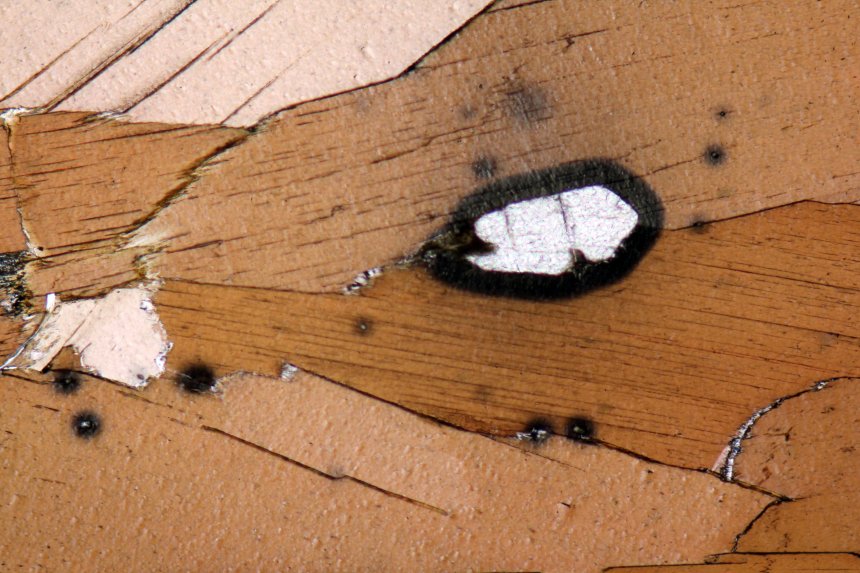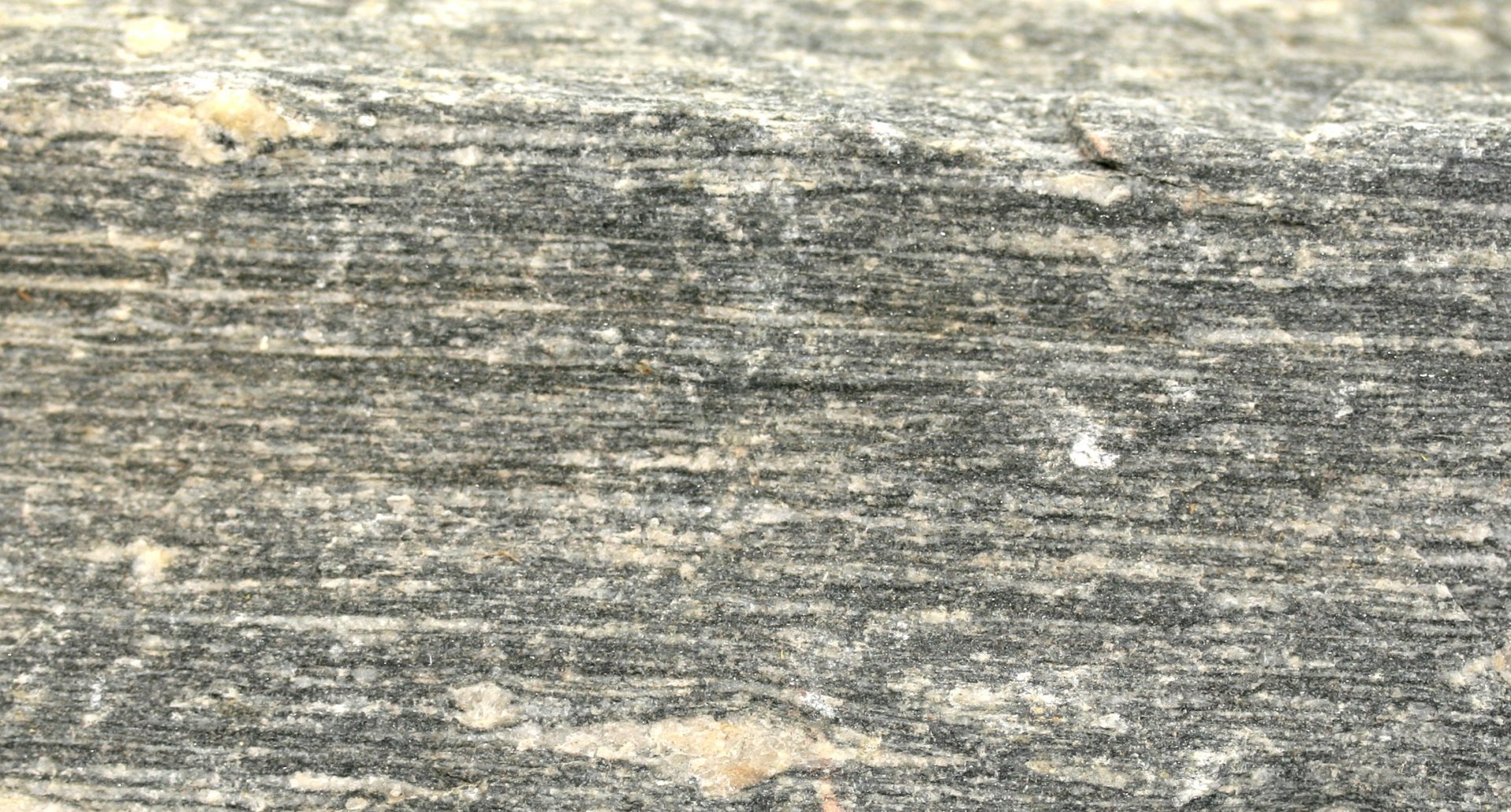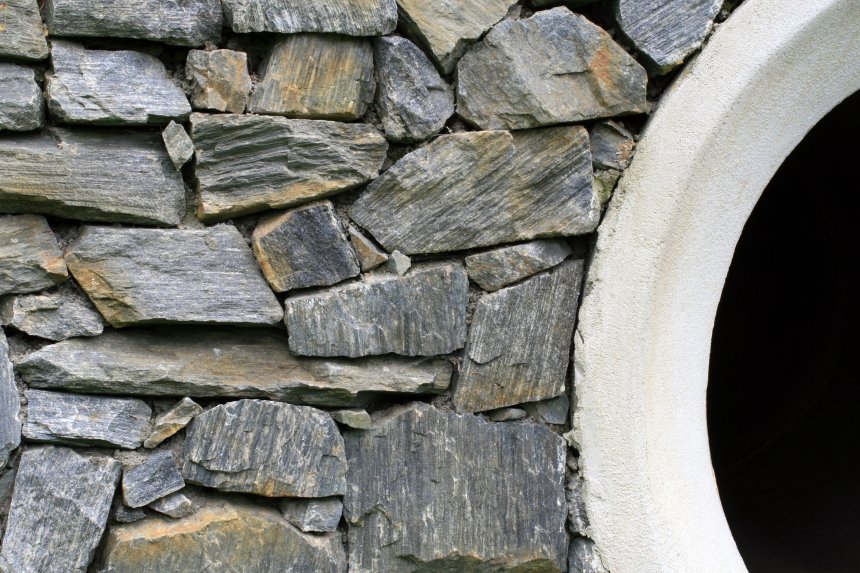Stone : gneiss
Type : metamorphic rock derived from a magmatic rock
Age : 450 million years
Quarry : Neiz Vran, Saint-Evarzec (Finistère)
Breizh Gneiss
Gneiss is a metamorphic rock primarily composed of quartz, feldspars, and micas. Its defining feature is the alternating and oriented layering of minerals. The light layers are made up of feldspars and quartz, while the dark layers are rich in micas. This structure is called foliation. The orthogneiss from Nizon may, in some layers, contain large feldspar crystals shaped like eyes—hence the nickname “augen gneiss” (from the German Augen, meaning "eyes").
A Former Granite
Geologists distinguish between paragneiss and orthogneiss, based on the type of original rock (before metamorphism).
If the original rock was sedimentary, it’s called paragneiss.
If it was magmatic, it’s called orthogneiss.
The gneiss quarried in Saint-Évarzec is a metamorphosed former granite—thus, an orthogneiss.
Absolutely Radiometric Dating
Geologists use trace chemical elements found in certain minerals to date magmatic rocks. In simple terms, these chemical elements act as atomic clocks. Their natural radioactivity reveals the age of the mineral, and therefore the age of the rock.
The oldest rocks in Brittany are gneisses, dated to 1,790 million years (1.8 billion years) using a specific mineral: zircon.

You’re Totally Foliated!
Foliation and schistosity are structures acquired during metamorphism, when the rock is subjected to high pressures underground.
In the case of foliation, minerals arrange themselves into layers of different mineral types, resulting in the alternation of dark and light bands.

